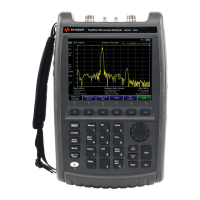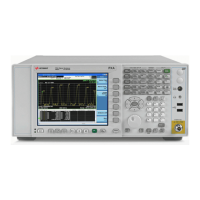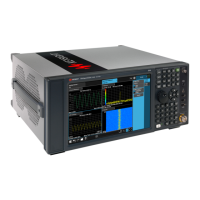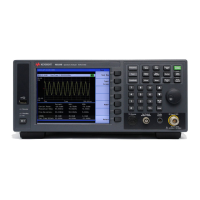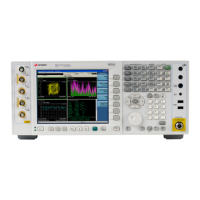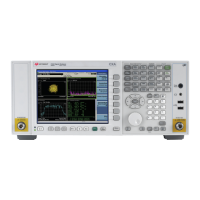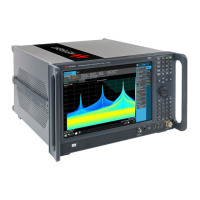Keysight N9912-90001 User’s Guide 8- 45
SA (Spectrum Analyzer) Mode
Channel Measurements
How to set limits for adjacent channels
You can set a unique threshold power for each of the offsets that will cause a
FAIL indication (RED bar). This occurs when the calculated dBc power (on top
of the offset bar) is ABOVE the specified level.
To set limits, with an ACPR measurement on the screen:
—Press Limit 8
.
—Then Set Limits (1,2, or 3)
.
— Then choose from the following:
—LowerOffset
Sets a limit for the lower-frequency offset.
—Upper Offset
Sets a limit for the higher-frequency offset.
— Then enter a value using the numeric keypad, arrows, or the rotary
knob.
—Then Limit Test ON OFF
.
Measurement Type
This setting determines how the measured carrier and offset power levels in
the table are presented. (Data in the graphical chart is always presented in
dBm for the carrier and dBc for the offsets.)
To select Meas Type:
—Press Meas Setup 4
.
—Then More
.
—Then Meas Type
.
— Then choose from the following:
— Total Pwr Ref
– Integrated carrier power is represented in dBm, and
relative powers between offsets and carrier are represented as dBc
(dB below the carrier).
— PSD Ref
(Power Spectral Density) – Integrated carrier power is
normalized to a 1 Hz density as dBm/Hz using a similar algorithm as
Noise Marker. Learn more about the “Noise Marker” on page 8-32.
For both Meas Types, choose the reference for the offset data.
— Auto
- dB or dBc value is computed by subtracting the measured carrier
power from the measured offset power.
— Man
– dB or dBc value is computed by subtracting the entered RefValue
from the measured offset power.
—Press Ref Value
.
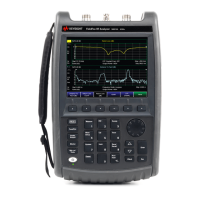
